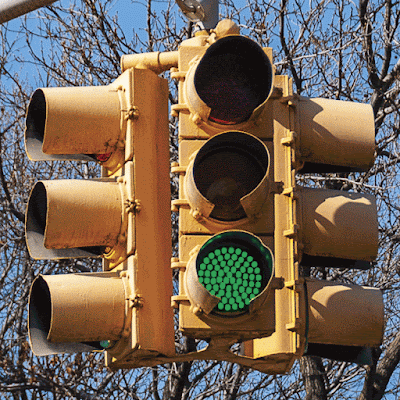![]() The traffic light, also known as a traffic signal or stoplight, has its origins in the development of transportation and the need to regulate traffic flow and improve road safety. Here's a brief overview of the origins of the traffic light:
The traffic light, also known as a traffic signal or stoplight, has its origins in the development of transportation and the need to regulate traffic flow and improve road safety. Here's a brief overview of the origins of the traffic light:
Early Traffic Control Systems: Before the invention of the traffic light, various methods were used to control traffic at intersections. In ancient Rome, for example, traffic officers would direct chariots and pedestrians using hand signals. In the 19th century, traffic towers and manually operated semaphores were employed in some cities.
First Electric Traffic Light: The first electric traffic light was invented by Lester Wire, a police officer in Salt Lake City, Utah, United States. In 1912, Wire developed a system with red and green lights mounted on a pole, operated manually by a police officer. This early design helped regulate traffic at a busy intersection.
Automated Traffic Light: The automated traffic light, as we know it today, was invented by Garrett Morgan, an African-American inventor, in 1923. Morgan's traffic signal, called the "Morgan Safety Signal," introduced an automated mechanism for changing the lights. It utilized a rotating disc with different coloured lights and was the first traffic signal to include a yellow cautionary light.
Further Developments: Following Morgan's invention, various improvements and innovations were made to traffic lights. These included the introduction of timers to control the duration of each light phase, the addition of pedestrian crossing signals, and the adoption of standardized colour patterns (red, yellow, and green) to ensure consistency and understanding across different locations.
Modern Traffic Control Systems: Over time, traffic lights have evolved into complex systems with advanced technology and connectivity. Many traffic lights today are equipped with sensors, cameras, and intelligent control systems to optimize traffic flow based on real-time conditions. Additionally, the integration of traffic lights with smart city infrastructure allows for more efficient and adaptive traffic management.
It's worth noting that different inventors and cities contributed to the development of traffic lights. The designs and mechanisms varied in the early stages, but the concept of using coloured lights to regulate traffic gradually became standardized worldwide.
The traffic light remains a crucial tool for managing traffic and ensuring road safety at intersections, providing clear signals to drivers and pedestrians and helping to prevent accidents and congestion.
Source: Some or all of the content was generated using an AI language model


No comments:
Post a Comment